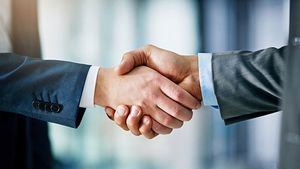JAKARTA - Oil prices rose to a new high level of four weeks at the end of trading Thursday (Friday morning local time), lifted by positive US economic data and higher demand forecasts from the International Energy Agency (IEA) and OPEC as countries begin to recover from the pandemic COVID-19.
Brent crude futures for May delivery added 36 cents, or 0.5 percent, to 66.94 dollars per barrel, after surging nearly 4.6 percent on Wednesday, April 14.
Meanwhile, US West Texas Intermediate (WTI) crude futures for delivery in May rose 31 cents, or 0.5 percent, to 63.46 dollars per barrel, after lifting 4.9 percent the previous day.
It was the highest closing position for both benchmark contracts since March 17 for the second day in a row and put both contracts up for four consecutive days for the first time since February.
"Oil is starting to reconnect with strong equities with further assistance from the weaker dollar", said Jim Ritterbusch, President of Ritterbusch and Associates, in Galena, Illinois.
US retail sales rebounded higher than expected in March when Americans received additional pandemic cash transfers and as COVID-19 vaccination allowed for broader economic re-engagement.
Positive data and earnings from several companies helped push the S&P 500 and Dow Jones Index to record highs, supporting hopes of a broader economic rebound.
The US dollar is on track to fall to a four-week low against a basket of other major currencies. A weaker dollar makes oil cheaper for holders of other currencies, which traders say helps support crude prices.
"Wednesday's April 14 rise was a bit exaggerated, but built with valid reasons as several important reports forecasting demand growth for the second half of the year, as well as US crude stockpiles, surprised traders with significant declines", said Rystad Energy Oil Market Chief Bjornar Tonhaugen.
"Today the market maintains this advantage, only dampening the enthusiasm a bit this week", said Tonhaugen.
SEE ALSO:
The IEA and the Organization of the Petroleum Exporting Countries (OPEC) this week made upward revisions to their forecasts for global oil demand growth this year, to 5.7 million barrels per day (bpd) and 5.95 million bpd, respectively.
US crude inventories fell by 5.9 million barrels last week, government data showed on Wednesday (4/14/2021), with crude stockpiles on the East Coast falling to record lows.
Supply discipline and a rebounding economy are expected to give the oil a chance to break out of its recent ranges, analysts at Goldman Sachs said in a report.
"We remain positive on Brent oil which is expecting 80 dollars (per barrel in the third quarter) amid a short-term recovery in demand and supply discipline", the bank said.
Despite all the bullish economic news, some energy traders noted that rising oil prices will likely be limited by OPEC's plans to cut production cuts starting next month.
OPEC and its allies, including Russia, a group known as OPEC +, agreed to return production to around 2 million barrels per day over the next three months.
Meanwhile, the United States is imposing broader sanctions against Russia over allegations of interference in last year's US elections, cyber hacking, repression in Ukraine, and other "harmful" acts.
The English, Chinese, Japanese, Arabic, and French versions are automatically generated by the AI. So there may still be inaccuracies in translating, please always see Indonesian as our main language. (system supported by DigitalSiber.id)















